
This fall the Friends of the Old Croton Aqueduct (FOCA) responded to a request from the OYB to provide a volunteer experience for some Ossining students.
We designed a program to give the students some in-depth information about the Aqueduct Trail and two days of experience learning how to manage invasive plants. This included learning the rationale for doing this type of work, how to identify some of the invasive plants and then how to remove them.
Jennifer Arpi, Program Assistant from the OYB, worked to recruit the students, organized them, coordinated with the Friends including managing transportation, and then, by her presence, helped make the days a success. Six members of the Friends including three Board members collaborated to make this a valuable experience for the students. Two of the NY-NJ Trail Conference AmeriCorps Trail Stewards, who had been functioning as Aqueduct Trail Ambassadors on weekends and holidays this past season, collaborated with Board Member Diane Alden and Adrianna Waitkins to plan and carry out the invasive management section of this project. Adrianna handled many complicated logistics with aplomb and grace, including the delivery of the lunch-time pizza.
Below is a photo of Diane on the first day, September 21st, welcoming and orienting four of the participating six students, with Rosie, Trail Steward, looking on.
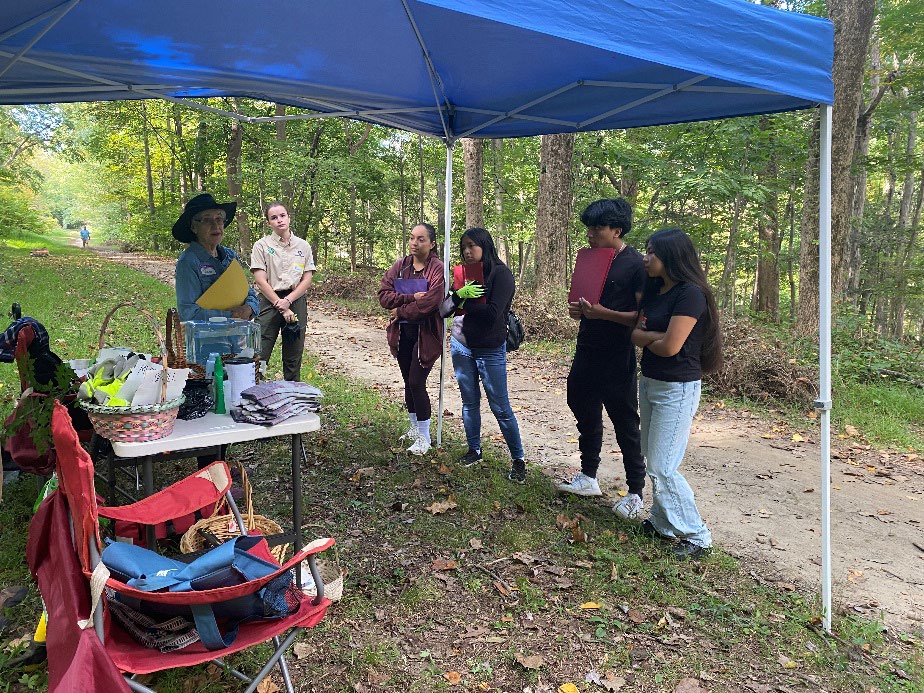
These are the two guys who did not make it into the group photo, collaborating in using the weed wrench. Joanna Riesman, the FOCA Board Administrator took the photo above and coordinated many of the logistics involved with this program.

Here is Stephen, Trail Steward, demonstrating the use of the weed wrench.
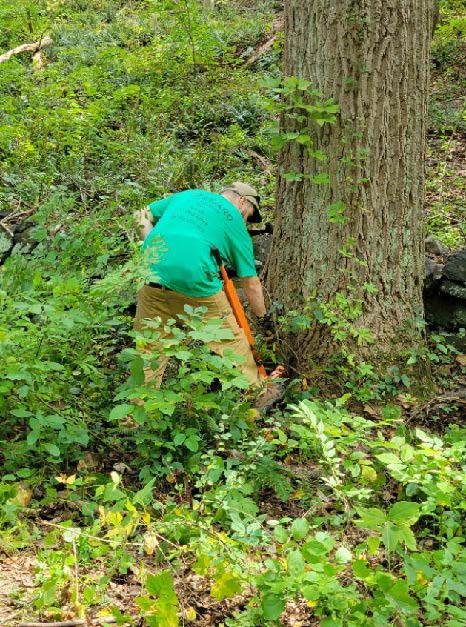
Jennifer Arpi and her sister Kayle were proud to have been successful in removing this bittersweet vine by the roots.

The students collaborated with each other to help clear a section of the trail by a stone wall.
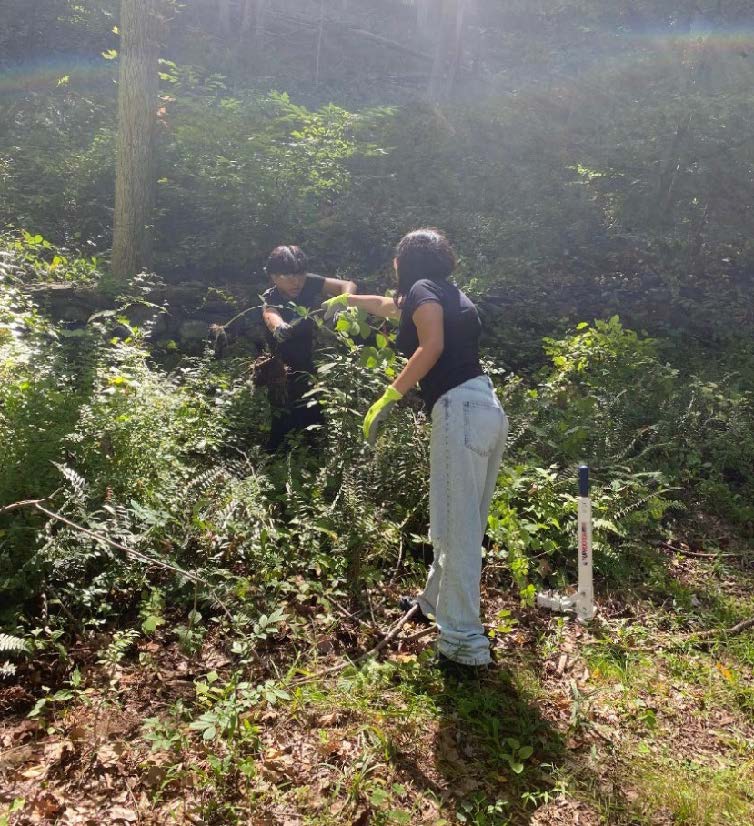
On September 28, nine OYB participants and Jennifer Arpi made their way by train to Dobbs Ferry and up the hill to the Keeper's House to help with FOCA's Aquefest. At the celebration of all things Aqueduct, students helped man the Aque-Duck flume and assisted kids in leaving their handprints on the banner celebrating 100 years of New York State's park system. The students also got to tour the interior of the Keeper's House and received a bit more information about the OCA's history. Despite the drizzle, the OYB students and the crowd that came out to Aquefest had a great day.
On October 5, nine students accompanied by Jeffrey Santos, Youth Bureau Youth Advocate, received a tour of the Croton Dam in Croton George Park, including a lecture by Board Member Tom Tarnowsky. Tom described the history of the Dam, and led a walk up its west side to the stunning view of the reservoir. The group then took a hike led by Joanna Riesman across the Dam, down the east side to the beginning of the OCA trail, and back to the park. Joanna reported that the weather could not have been lovelier.
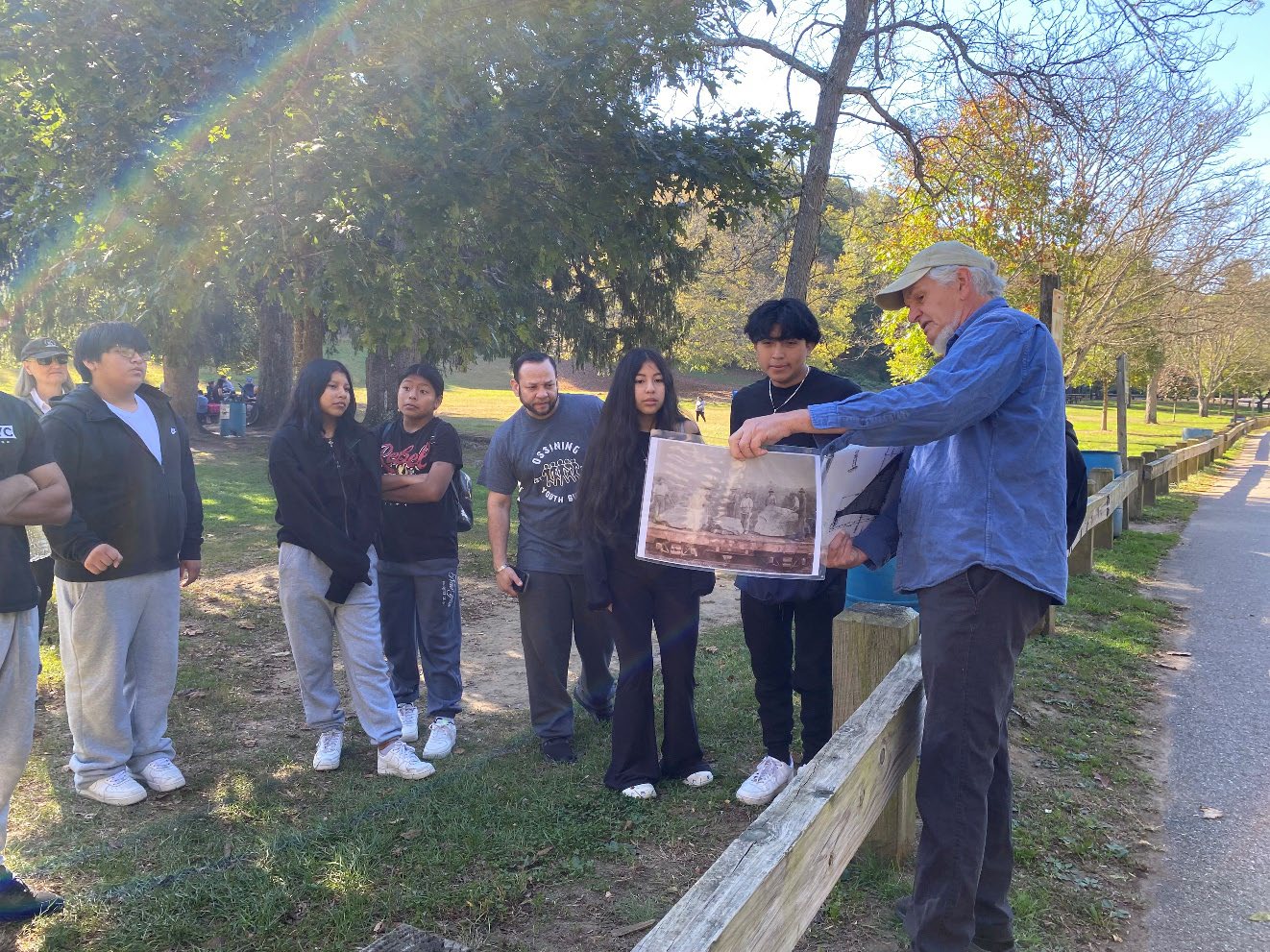
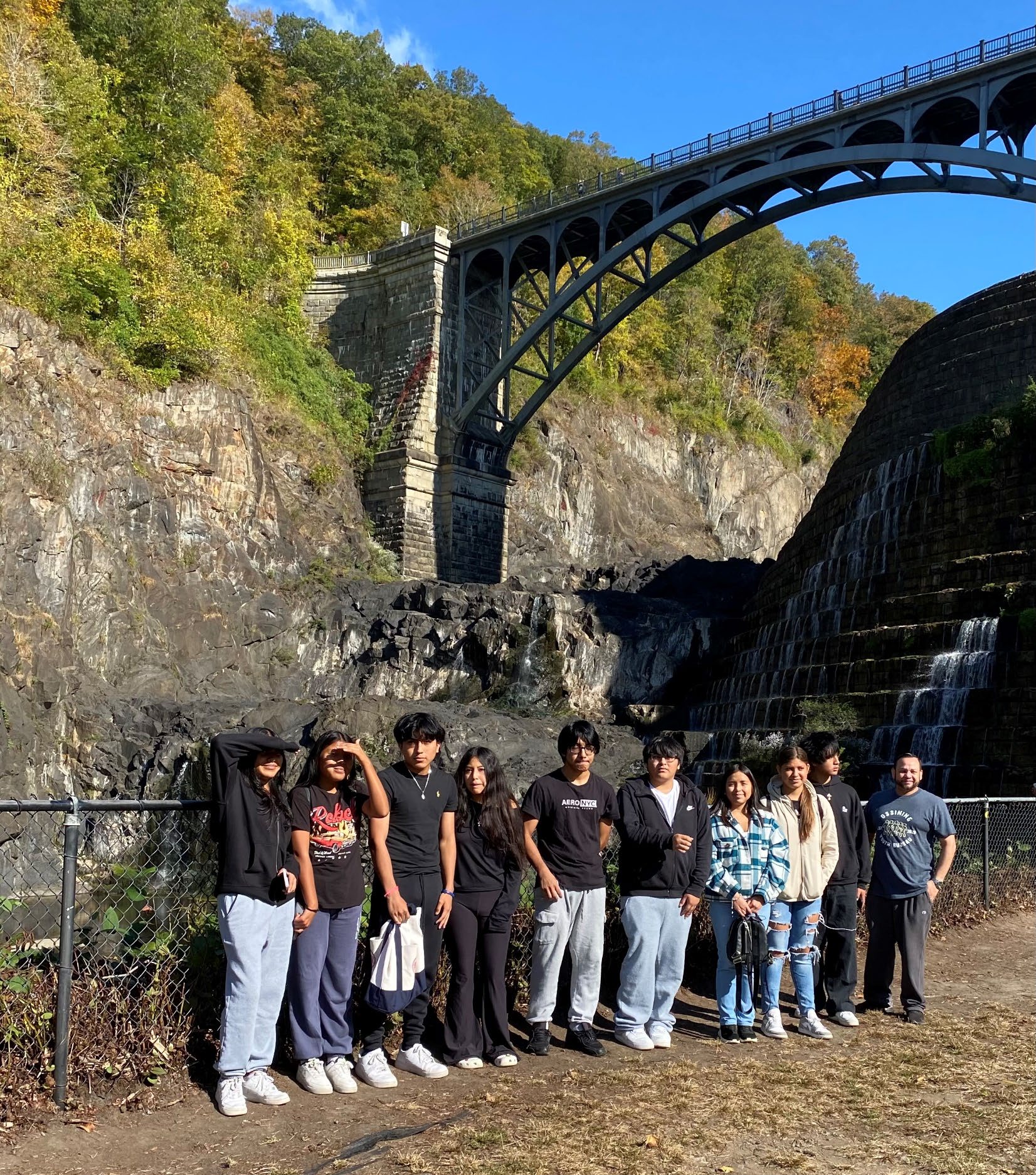
On the second day of invasive removal, October 12, eleven students participated; five of them were present on the first day, with only one drop-out of the six who came on September 21. Diane posed in this picture showing thumbs up for the success of the day. The folders in the students are carrying contained photos of the targeted invasive plants to help identify them. They also went home with a pamphlet listing the Prohibited and Regulated Invasive plants of New York State.

Jean Zimmerman, Board Member, came to take photographs, including the one above and then helped us keep track of which invasive species we were removing and how many, substituting for Adrianna who was keeping the tally. Here are Jean’s comments about the day: “I hope you’ll say this about Saturday: The event was great! It really got some urban kids thinking about nature, and how they themselves could make a difference to protect and restore plants. That’s no small thing. I loved seeing their excitement pulling up invasives small or large and using tools. They especially seemed to like using tools! I can see that some of them would want to revisit the Trail, given the chance. Bravo Diane and Trail Stewards and Adrianna! Great job. And please quote me on that!”
Special credit to Rosie and Stephen, the NY-NJ Trail Conference Trail Stewards who provided enthusiastic guidance to the students,and also helped plan both invasive removal days. They set up the station on both days. Our system was to divide the students into three groups, one led by Rosie, one by Stephen Mesa and one by Diane. We rotated the groups during the day so each group got to work with each of us, with three sessions each day.

An enormous thanks to Jean for coming to take photographs and for being a support and special presence during the day. Here she is helping to pack out some of the supplies.

Here are a few photos taken by Jean on the second day including some of the tools involved.
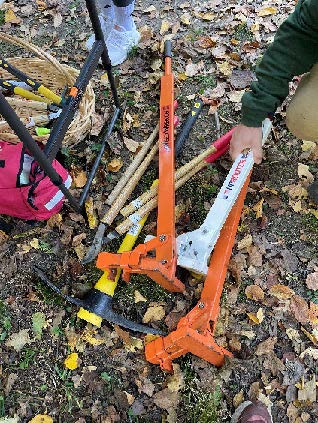
The students quickly mastered the technique of using the weed wrench to pull out bushes, shrubs and small trees. It seemed to be particularly empowering for the young women to be so successful. This is Kimberly using leverage to get the roots out.
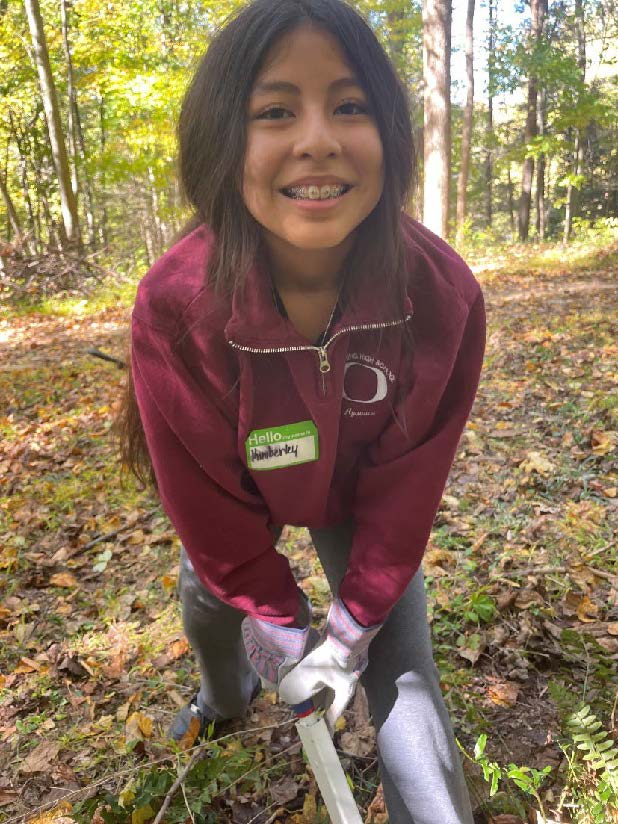
Suyana was also proud to have been successful at removing this Siebold’s viburnum up by the roots. No resprouting of this very invasive shrub.
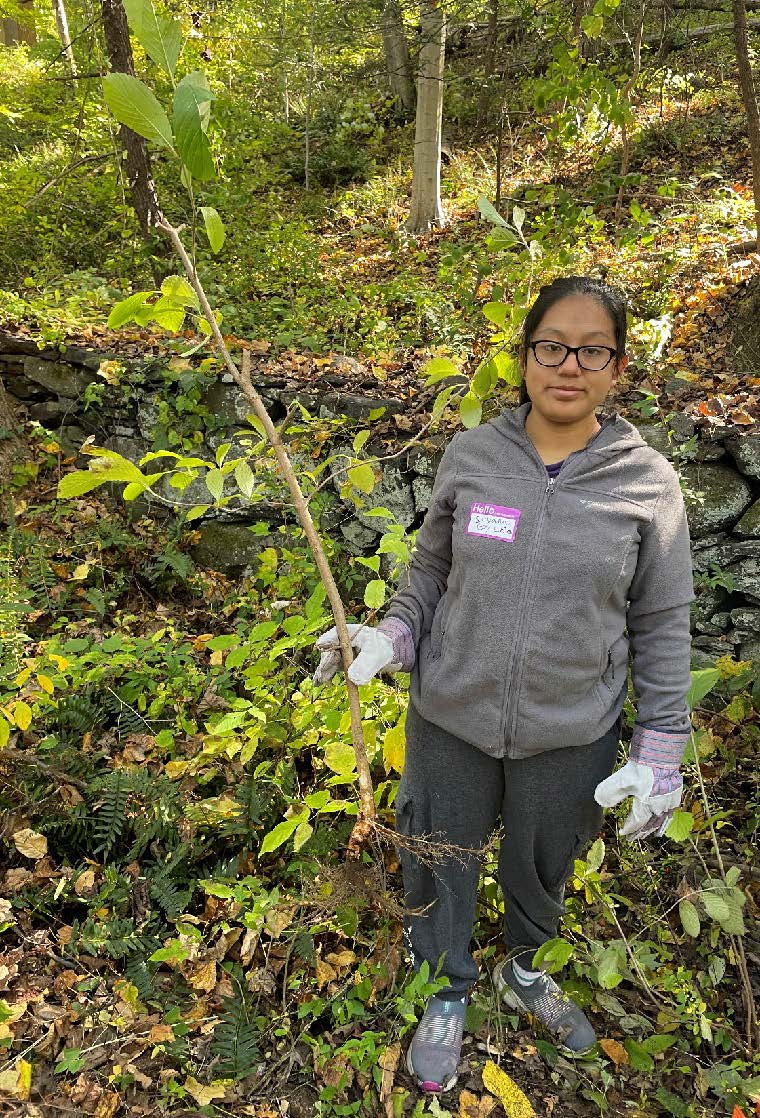
Using smaller tools, the students learned to be carefully persistent at getting the plants out by the entire root, even when they travel horizontally. Kaylee was pleased with her work!
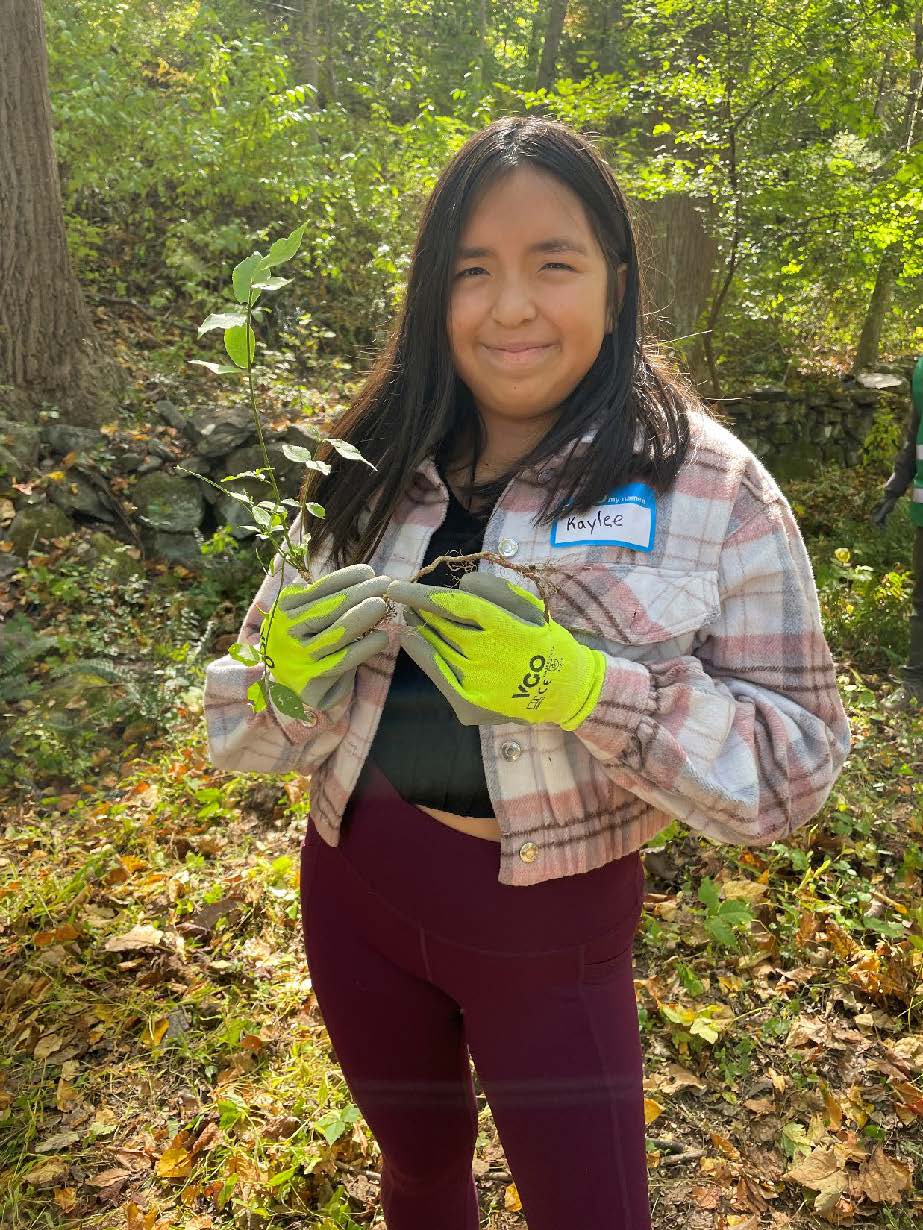
As was Brian. 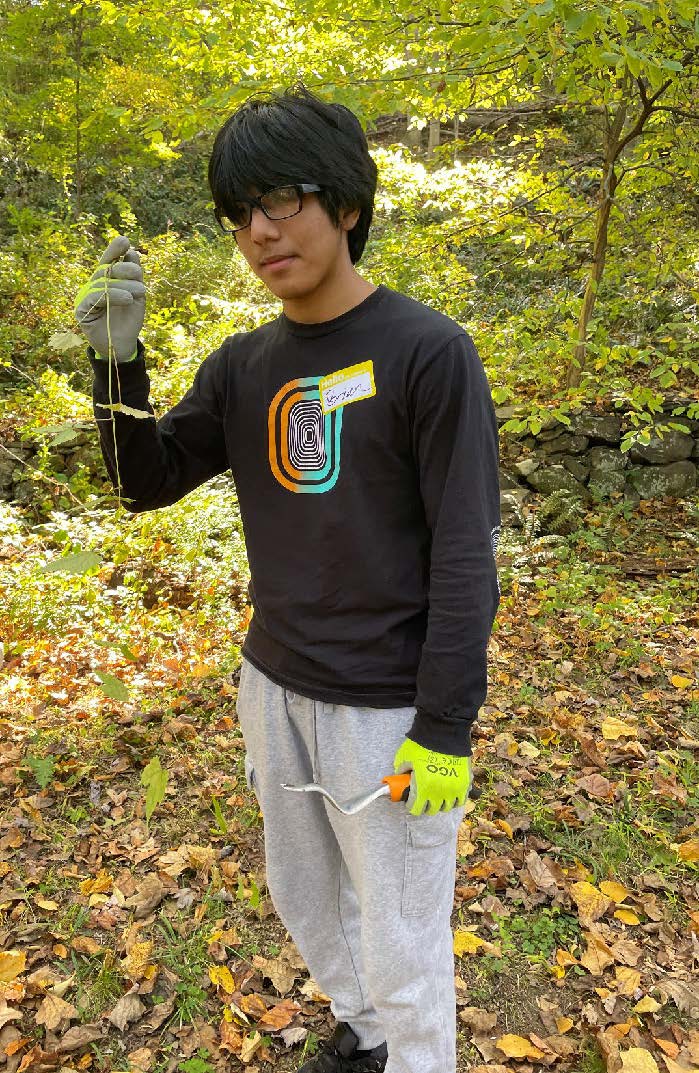
The students added their contributions to the piles of invasive plants and bushes removed by the volunteers and the Invasive Strike Force earlier in the month. The tally for the second day of invasive plants removed was a whopping 308 plants, probably an undercount.

Here is a photo showing the students at the end of the second Invasive Removal Day; the raised hands indicated they especially enjoyed becoming proficient at using the weed wrench. Turns out that using that tool was an empowering experience for them; it appeared that learning to use this tool effectively was the high point of this event.

The trail is now safer with fewer Barberry bushes, and the removal of many vines which could eventually grow and entangle our valuable trees. Kudos to all involved. On October 19, the last day of their adventures with the Friends, ten of the students accompanied by Jennifer, received a tour at the Ossining Weir so they could see the inside workings of the tunnel on which they had been walking during their time on the trail. Sara reported that she enjoyed working with the students and that she was sure they enjoyed the experience.


